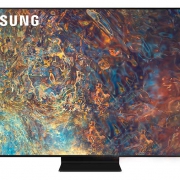Android is today the most used operating system on mobile platforms, smartphones and tablets. Bought by Google in 2005, it has been improved over the years and has left no chance to its competitors. Only Apple’s iOS has survived, leaving alternatives such as Windows Phone or webOS on the shelf. So if you don’t buy an iPhone, you’re bound to buy an Android smartphone.
Entry-level, premium, compact, large screen, and now even foldable smartphones, Android adapts to all hardware possibilities. The OS has even been adapted for televisions and cars, but we won’t dwell on those solutions here.
Instead, we’re going to learn how to master Android to perfection and reveal all its secrets. Because if the interface is easy to learn, there are many subtleties that are not necessarily known and yet make life easier.
We’ll try to be as clear as possible on the different steps to follow, the difficulty being the impressive volume of Android versions, between updates and overlays. But don’t panic, our advice generally applies to most users, regardless of their OS variant.
Android: the most used operating system in the world
According to statistics from the IDC analysis firm, Android’s market share for the smartphone sector is 86.6% in 2020, compared to 13.4% for iOS. The operating system of the iPhone and today the only competitor to the mobile OS of Google. The institute estimates that this share will increase slightly in the coming years. It must be said that Android is popular in developing countries, such as India for example, where demand is now higher than in Western countries.
At the time of writing, the latest major version of the OS is Android 12. For the first time, Google has decided to abandon the dessert names (Android 7 Nougat, Android 8 Oreo, Android 9 Pie…) to give itself a more serious image and clarify its update system. In fact, there is now one major update per year, usually at the end of August or beginning of October for the official launch on the first compatible smartphones. Previously, we had two annual updates (Oreo 8.0 and 8.1 for example). And even before, there was no real rule. Everything is simpler and better organized now.
The main flaw of Android compared to iOS is its distribution. New updates are slow to be deployed by third-party smartphone manufacturers, and two-year-old mobiles often simply never get them. So we end up with a splintering of the market, with Android 8 Oreo and Android 9 Pie remaining more installed than Android 12 several months after the latter’s release. This is the price to pay for having so much variety in products. Note that Google launched Project Treble in 2017 with the rollout of Android Oreo. This is an overhaul of the operating system’s architecture to simplify the software tracking work for manufacturers. The situation with regard to updates is slowly improving since the arrival of Treble.
Android, although it has tended to close in on itself for a few years, is still a relatively open OS, especially when compared to the compartmentalized and impervious iOS. This is why it has become the preferred solution for hobbyists and customization enthusiasts. Google is trying to find a balance between security and freedom, no easy task. Long considered the operating system of viruses, malware and security flaws, Android is much more protected now, but at the cost of diminishing its open history. Today, root is much less practiced (but also less necessary) than in the past for example.
Each version of the OS has brought a stone to the building that Android has become today. One example is Android Honeycomb 3.0, which was designed to support tablets, and which got off to a slow start, but has since been improved through a series of updates. That’s why it’s important to know how to configure and keep your Android smartphone up to date to get the best experience available. Note that it is sometimes difficult to put a date on the arrival of a feature on Android. Some “new features” were indeed added by manufacturers via their in-house overlay long before they were integrated into Android Stock (the pure version of Android, used on very few smartphones, usually entry-level). And here is a perfect transition to talk about the different Android overlays.
Android and the overlay
Android is undoubtedly one of the most modified and customized operating systems by hardware manufacturers who opt for Google’s mobile OS. On Windows, manufacturers simply pre-install a range of software. This is also the case with Android, but brands don’t stop there: they also change the entire interface and menus and add or modify features. This is called an overlay.
Samsung has One UI, Huawei has EMUI, Xiaomi has MIUI, OnePlus has Oxygen OS, Oppo and Realme have Color OS etc. Even Google does not equip its own Pixel smartphones with the basic version of Android. They too are entitled to an overlay created specifically for this range. In the end, very few devices come with what we call Android Stock. There are entry-level models that are content with it, like Nokia (HMD) for example. This has the merit of facilitating the work of developers in terms of software monitoring.
The advantage is that users can choose from a wide variety of interfaces. Some are die-hard Oxygen OS fans, others swear by Samsung’s overlay (One UI has replaced Samsung Experience, which itself took over from TouchWiz).
But this also brings disadvantages. In particular, we find ourselves with applications that are duplicated between those of Google and those of the manufacturer: mail client, notepad, calendar, weather, browser … so many services that we find twice on many Android smartphones. And very often, it is impossible to remove applications from the manufacturer, unnecessarily cluttering the home page, the application drawer or storage space.
It’s not uncommon for design elements and popular features added on some overlays to end up on Android Stock. Some brands are very close and attentive to their community in order to offer their users the interface they dream of. This is particularly true of OnePlus, which offers beta programs and is very active on its forums.
Android: a system that gives control to its users
Android no longer gives 100% control to its users as in the past, for reasons of security and control of its ecosystem, but remains much more permissive than iOS. It is thus possible to download applications that are not available on the official store (Google Play Store) via alternative stores or APK files and to change many settings on its device.
Giving so much freedom and permissions to all users, even those who are not really aware of what they are doing, is however a policy that has its limits. It is not advisable to download files from unknown or untrusted sources, or to root your smartphone when you have limited knowledge of computers and the Android system in particular.
Incorrect handling can lead to bugs or even the infection of the device by malware, which is abundant on the web. If you’re not sure what you’re doing, stick to the minimum, i.e. adjust the settings that are not hidden and install applications from the Play Store. If you have a recent Huawei phone that does not have access to the Play Store, you can use the brand’s application store, but be careful what you download. You can also go through the official website of the publisher or developer of an app to acquire it.
But even if you take a thousand precautions, you can sometimes be tricked. Google removes hundreds of applications from its store containing malware and viruses every year, even the Play Store is not 100% reliable. In rare cases, an app can crash your device. But fortunately, there are solutions and we explain how to debug and repair an Android smartphone.
Android interface
As we explained above, each manufacturer offers its own overlay to Android. In addition, users have the necessary permissions to modify interface elements themselves. Finally, there are applications called “launchers” that allow you to benefit from an interface designed by third-party developers. These applications are often highly customizable, and each user can therefore create his own unique UI.
Given this diversity, we will focus mainly on the basic screens needed to understand and master an Android smartphone. We will review the elements that are common to most interfaces.
The lock screen
The lock screen allows you to access some information quickly without having to unlock your smartphone by one of the available authentication methods: PIN, password, schema, fingerprint or facial recognition. It shows essential data such as battery level, time, date or the latest incoming notifications.
The lockscreen is perfectly customizable. It adapts to the theme you have chosen and it is possible to change the background image, which can be different from the home page wallpaper.
The home screen
The home page is the interface that you see after unlocking the smartphone. It is designed to give quick access to all the most used services and is fully customizable. It usually contains the most important widgets (time and date, weather), the Google search bar with Google Assistant and voice search, as well as a selection of shortcuts to the most important applications.
By superimposing applications, it is possible to create folders in order not to clutter the screen too much and to get organized. You can group all Google services together, SVOD platforms together, put social networks or messaging applications together… Some interfaces also offer an application drawer, in which you can find all the apps. This system allows you to relegate little used applications in the drawer to leave room for others on the home.
We also have at the bottom of the screen a dock, in which it is generally possible to integrate five application shortcuts. This dock is immovable and remains displayed even after a swipe to a side screen. It is therefore necessary to position there the applications that you use most often or that you want to access as quickly as possible.
Everything is absolutely customizable. Each element can be moved, added or deleted as the user wishes. Themes allow you to change the aesthetics of the icons and widgets to get the most personalized experience. The wallpaper is of course independent of the one used for the lock screen and it is possible to put any image.
The widgets
Widgets are interface elements that display information without the need to enter an application: weather, bank account activity, next bus that arrives at the stop next to you, calendar, music player… The possibilities are numerous and they allow quick access to certain data.
Widgets can be placed anywhere on the home page, in the middle of applications, in a corner, at the top, at the bottom… the choice is yours! Their size varies according to the functionality offered. You can also create a page dedicated only to widgets so as not to mix them with the application shortcuts.
To add widgets, just long press in an empty space on the home page and select “Widgets”. You can then choose from the proposed selection. There are the default widgets (from the manufacturer and Google) as well as widgets proposed by third-party applications you have installed (Netflix, Spotify, WhatsApp … for example).
The notification center
To open the notification center, simply scroll the notification bar by moving your finger up and down. You then have access to shortcuts to settings that are often needed: airplane mode, WiFi, mobile data, flashlight, Bluetooth, GPS, screen rotation … The shortcut icons can be arranged according to preferences. This part of the notification center is called control center on iOS.
Underneath, it is possible to adjust the brightness of the screen manually if the brightness adjustment feature does not suit you. And then, we find all the notifications, these messages that warn you that you have something to see in such or such application or that display information (weather, soccer score …).
From now on, it is possible to display content directly in the notification center, allowing you not to enter the app and save time. You can read emails or WhatsApp messages for example. The quick response system also gives the possibility to respond directly from the center, again without switching to the app in question.
Notifications also appear on the lock screen or Always-On display, but logically it is not possible to interact with them in this situation, they appear only as a warning. The display of notifications when you are already using an application differs between the overlays. It is usually possible to read part of the message, which remains relatively discreet. By default, and this can be annoying if you are listening to music or watching a video, the sound volume drops when you receive a notification. Some overlays offer a configurable “gaming mode” that acts as a “Do Not Disturb” option in game to avoid seeing a notification arrive and lose the sound in the middle of a game.
Google services
Even without an overlay, Android remains a relatively complete OS with many native features ranging from the useful to the indispensable. To get the most out of your smartphone, you need to know how to master all the features of your Android smartphone.
Google’s services are at the forefront of this, providing real added value that enriches the user experience. We can see this with Huawei, which has a hard time selling its smartphones without Google applications in Europe.
Note that some native applications have been relegated lately. They are no longer pre-installed on smartphones but must be downloaded via the Play Store. This has the merit of less cluttering the devices with apps that are not very useful for many users and that are often duplicated with the manufacturer’s overlay.
Google Assistant
The voice assistant integrated by default on Android smartphones is Google Assistant, the equivalent of Siri on iOS and also the main competitor of Amazon’s Alexa in the home automation sector. To activate it, all you have to do is precede a command with “Ok Google” or “Hey Google”.
The possibilities are enormous. By voice, you can use Google Assistant to open an application, make a web search, make a call, listen to music, set an alarm, translate, check the weather, ask for sports results or news or manage the connected objects in the home.
Google Assistant is featured on most Android smartphones on the market. But the number one in the industry, Samsung, is trying to push its own solution: Bixby. The same goes for Huawei, which is working on its own assistant since it is not allowed to use Google’s.
Google Pay
Google Pay was born from the 2018 merger of Google Wallet and Android Pay services. It is an electronic wallet system allowing online and physical contactless payment by NFC. It is also possible to directly integrate its loyalty cards, restaurant vouchers or coupons.
Google Pay is compatible with many online banks (Boursorama Banque, Revolut, Orange Bank, N26…), but is not yet supported by many traditional banking institutions in France, which have launched their own solution with PayLib. For owners of a Samsung smartphone, the manufacturer puts forward its own application: Samsung Pay.
To pay without contact with Google Pay, several barriers arise. First, the merchant must accept this payment method. They are more and more numerous to do so, but it is not systematic. Then, the smartphone used must be equipped with an NFC chip. Here again, if most of the recent devices are equipped with one, the whole mobile fleet does not have an NFC chip.
The service is secure. For amounts over 30 euros (as for contactless bank cards), the user must authenticate and unlock his smartphone for the payment to go through.
You can group as many bank cards, physical or virtual, as you want on Google Pay. However, you have to choose one “by default”. There is no limit either for transport tickets, loyalty programs, and gift cards.
Google Maps
This is probably the application Google can be most proud of, the one that surpasses on all points its iOS counterpart, in this case Plan. Maps integrates accurate mapping as well as GPS and navigation. On foot, in the car, for public transportation, and even to find bike and electric scooter stations, Google Maps is a reference.
And it’s not just for directions that Google Maps is doing well. The service is becoming more and more an alternative to Trip Advisor: it advises us on places we might like, asks us to rate them, it is even possible to book a table from Maps. And Google is developing a feature for Google Assistant to call a restaurant or a hair salon itself to make a reservation or an appointment.
Maps can be downloaded to guide you with the app in offline mode. It is also possible to share one’s position in real time so that another user can join us or follow our progress. We also have the possibility of saving places to visit or favorites, among other features.
In short, an ultra complete application that has taken the good ideas of Waze and Trip Advisor, all grouped in a well thought interface where we can find all the features simply.
A huge catalog of applications with the Play Store
There are many more applications available on Android than on iOS, for several reasons. First, the Google Play Store has a less restrictive policy than Apple’s App Store. Some apps that can’t be accepted on the App Store can therefore end up on the Play Store. There is also the fact that developers may want to focus on Android because the operating system has a larger market share. Or more simply because they have more knowledge about developing on Android. And finally, iOS is limited to App Store apps, where Google allows external sources via other app stores and APK file downloads.
For several years, Google has worked hard to restrict the influence of these external sources and to secure its Play Store. The Play Store now hosts far fewer dangerous apps, but some still fall through the cracks and can endanger users’ devices.
The Mountain View company has also tightened its policy in terms of authorizations granted. An application can now only ask users for permissions that they really need for their operation. Access to contacts is out of the question for an SVOD app, for example.
But be careful, this vast volume of applications should not make you lose your head. Only install the apps you really need. Otherwise, you risk slowing down your smartphone, losing battery life and taking up storage space. Not to mention the mess in the app drawer and home page, as well as the unwanted notifications from those apps. We tell you more about this in our dossier which teaches you how to manage the applications on your Android smartphone to perfection.





